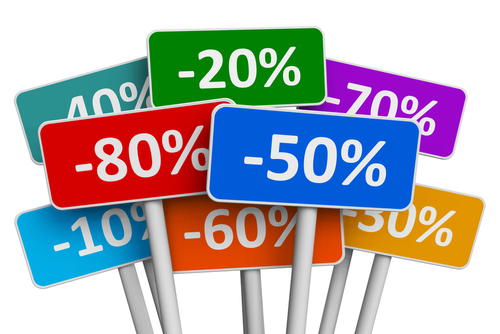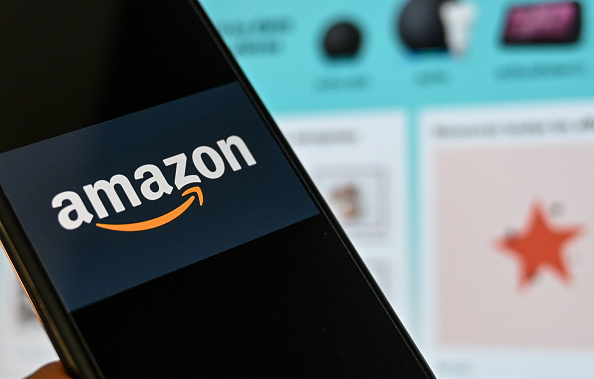Something fascinating happened in British retail this winter, as the high street split in two over the question of pre-Christmas discounting. On the one hand, there were the traditional hack-’n-slashers, such as M&S, Debenhams and H Samuel, which dropped their prices quicker than a butterfly in a weightlifting contest. On the other hand, a brave few, including John Lewis, Next and Ryman, decided not to discount at all until the turkey had been eaten and the Queen had spoken.
Guess which group made record profits, and which one suffered painful losses?
In fact, this schism was so pronounced that many have started to question whether the entire concept of discounting has run its course. As a customer, there’s only so many times you can hear ‘get it cheap!’ before you start to wonder whether the product in question was overpriced to begin with. And there’s only so often you can hear ’50 per cent off’ before you start to expect 60 per cent, 65 per cent 70 per cent…
Once upon a time, a decent discount paid for itself in exposure (making the tactic especially interesting to small businesses and start-ups) but, with so much discounting going on, any real cut-through requires margin-obliterating cuts of 80 per cent or more. Even then, it’ll simply attract deal hunters with no loyalty to your brand and no incentive to shop with you again.
And this isn’t solely a problem for retail. Whether you’re a FTSE 100 CEO or a bedsit beginner, you’re selling things, which makes pricing one of your top concerns. The difference between the two? SMEs can barely afford to compete with established players at the best of times, let alone run the risk of trashing the price-perception of their products and services.
Discounting is dumb
To put it another way: unless you’ve got money to burn, discounting is dumb.
It’s dumb because it’s counterproductive and self-defeating. It’s dumb because it makes customers question whether they want what you’re offering, whether it’s really worth much of anything at all. And it’s dumb because it’s such a static, inflexible and blunt tool; everyone gets XX per cent off whether or not they deserve it, whether or not they need it, whether or not they even asked for it. Blanket, generic discounting is taking the worst possible bargaining position: starting off at your rock-bottom price and expecting the customer to haggle you upwards.
So, what’s the alternative to dumb discounting? Well, it certainly isn’t no discounting at all. JCPenney tried that approach three years ago and are still fighting to recover from the calamitous consequences. What’s required, clearly, is another way, and that’s smart rewards: dynamic offers which aren’t simply pushed out by you, they’re pulled down by your customers.
In this day and age, it’s absurd that businesses continue to take enormous risks in guessing which offers will gain the most traction with their customers. All they have to do is ask them ‘what would you like to see?’ and detailed customer intelligence is only a click away. More than that, when a customer asks for a deal and gets that deal, they’ve got ‘skin in the game’ and they’re far more likely to purchase when the deal goes live. That means not only a vastly improved conversion rate, it also means you can afford to be significantly less generous with your margins.
Use innovative pricing structures
So, already, smart rewards reach the right people at the right price. But there’s another element which makes smart rewarding so successful, and that’s dynamic pricing. Instead of offering customers a done deal discount, why not make it so that your rewards improve, and keep improving, as and when customers exhibit behaviour that’s beneficial to your business.
Exactly how that happens depends on your business and its priorities: some might choose to increase the reward in exchange for ongoing loyalty, others for quick on-boarding, others still in exchange for customers spreading the word among their peers. Remember: word-of-mouth marketing is seven times more powerful than advertising so, by incentivising viral sharing (especially via social media), you can solve the cut-through problem we discussed above in a single stroke.
Over the years, I’ve worked with businesses ranging from boutique watchmakers and local dentist chains to global giants such as Tesco, PepsiCo and J&J, helping each of them to evolve from dumb discounters into smart rewarders, using exactly these tactics. And I’ve found that, no matter the size of the business, customers instinctively get it when you ask them to earn their rewards. They understand that something for something is much more meaningful than something for nothing. And they’re more than happy to scratch your back in return for the rewards you, in turn, dish out. Most importantly, though, they’re happy to recommend those businesses to their friends and colleagues (we generally see an unprecedented referral rate of circa 60 per cent) and there’s absolutely nothing dumb about that.
These are perilous times, and it’s never been harder to stand out from the crowd. The solution, it seems, isn’t to shout loudest – it’s to shout smartest.





